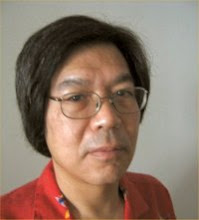It's now Monday, the 16th of November here in Berlin.
The whole experience of being in Berlin has been a curiously alienating one, because here i really do feel cut off from familiar surroundings. London, Paris, Tokyo: none of those cities ever felt as strange as Berlin.
Last week was the big "Fall of the Wall" celebration: 20 years since the Berlin Wall fell, and celebrations to... what? Celebrate the fall of Communism? Is the Fall of the Wall supposed to symbolize the triumph of Capitalism? it's a little schizophrenic.
But last Monday, there really was a big celebration which reached from Potsdamer Platz to the Brandenburg Gate. Claudia (another fellow here at the International Research Center) decided that we really wanted to see some of the festivities. So we trooped around in the rain, going from Potsdamer Platz to the Brandenburg Gate area (though it was impossible to get too near the Brandenburg Gate, there was a section already reserved for those people who had been able to get tickets, and then there were people who must have camped out for hours). We were able to see some of the festivities on the large-scale screens that were set up a few blocks from the Brandenburg Gate (we were about five blocks from the Gate).
There's been a lot happening, but right now i just want to focus on the issue of Performance as "commodity". How can performance be preserved?
Andre Lepecki from NYU's Performance Studies Dept. came to the Freie Universitat on Thursday, to deliver a lecture on the question of "the archive" and "the reconstruction" in terms of performance. I had fears that it would turn out to be an uncritical affirmation of "reconstruction" as a necessity in terms of Performance Art, but that wasn't the case. Lepecki brought some very smart and provocative examples, and really had a critical approach that was quite refreshing.
But in the past few weeks: in last week's NY Times Magazine, there was an article about the Merce Cunningham estate trying to wrestle with this problem of preserving the legacy of Cunningham's dances. And then this week, in the NY Times Arts & Leisure section, there was Claudia La Rocco's article about reconstructing Anna Halprin's work from 1967 (which will be at Dance Theater Workshop this week). And there's the review of Trisha Brown's residency at Dia:Beacon, where, since she does not have a proscenium to work with, Brown is reviving dances from the 1960s through the mid-1970s, dances which were meant to be done plein-air (as in the case of "Leaning Duets").
The question is why these "dances" are not seen in terms of the traditional method of traditional dance continuity, where a ballet such as "Swan Lake" is codified in terms of specific movements and then those movements are taught to the next generation. But with this "reconstruction" business, there is an attempt to revive, not the specifics of the dance, but the specifics of the experience.
And i don't know if that is possible.
One thing: i have been remiss about the Premio Dardos Award. Joe Baltake, who has the invaluable blog "The Passionate Moviegoer" (http://www.thepassionatemoviegoer.blogspot.com), just awarded me a Premio Dardos Award, which is supposed to highlight blogs which the writer finds particularly noteworthy. It's one of those things where you are given one of those awards, then you're supposed to select five more to award.
Well: Joe follows Dave Kehr and Carrie Rickey (as do i); i would also note that i follow Reid Rosefelt (http://www.speedcine.com/blog), George Robinson (http://www.cine-journal.blogspot.com), Michael Giltz (http://www.popsurfing.blogspot.com) and Ian Stott (http://www.theonelinereview.blogspot.com). But somehow i have to do this properly....


0 Comments:
Post a Comment
<< Home